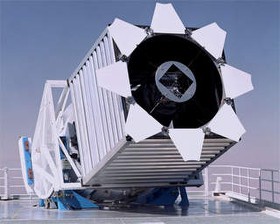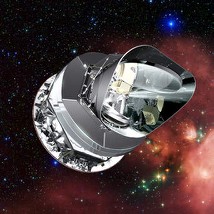A new success for the standard cosmological model
The joint analysis of the latest data from the Planck satellite and the properties of the very large catalogs of galaxies collected by the Sloan telescope support the model of an accelerating universe with most of the matter in the form of cold dark matter. This is the “ΛCDM” model, which is part of the Big Bang theory. This is the conclusion of the work of two researchers from the Institut de recherche en astrophysique et planétologie (IRAP/OMP) and the Astroparticle and Cosmology (APC) laboratory published in Astronomy & Astrophysics.
The Big Bang model has had many successes for more than forty years, as Jim Peebles reminded us in 2019 in his speech at the Nobel Prize ceremony in physics: two large data sets allow many tests. On the one hand, these are the measurements of the fluctuations of the cosmological background which, with the Planck satellite, have reached a remarkable precision allowing to refine considerably the characterization of the universe when it was only 370 000 years old. And on the other hand, measurements of the distribution of matter from all the observations collected by the Sloan telescope.


Despite the remarkable agreement of these data with the predictions of the “ΛCDM” model of a universe dominated by cold, accelerating dark matter, two shadows remain.
The first concerns the measurement of the Hubble constant. Values obtained from measurements within the local universe indicate values 5-10% larger than those inferred from observations provided by Planck and independently from measurements obtained on the Sloan telescope. This represents a disagreement that is “significant to about 5 sigmas”, i.e. an event that has a 0.000057% chance of occurring.
The second is also a disagreement of the order of 5 to 10%, and concerns the amplitude of the variations of the density of matter measured by Planck with a precision of 1 to 2% when the universe was 370 000 years old. Measurements of dark matter mapping can be obtained by observing gravitational lensing effects, a method pioneered by the Canada-France-Hawaii Telescope survey. Such measurements, from the “present” universe, indicate values significantly lower than those deduced from Planck observations.
Another indication, itself derived from Planck data, concerns the abundance of galaxy clusters. Planck had indeed the capacity to count these objects in the current universe. However, given the estimated masses, the number of clusters observed is between two and four times lower than expected, which could be explained if the amplitude of the variations of the density of matter was a few 10%. This represents a “tension” around “5 sigmas”.
Recently the set of results obtained from the Sloan telescope data has been made public and confirms that the distribution of galaxies is in very good agreement with the “ΛCDM” model. They also provide information on the dynamics of the large structures which depends on the amplitude of the variations of the density of matter. But unfortunately these last measurements in themselves do not allow to settle the debate because of the uncertainty on the other cosmological parameters.
However, it is possible to use these data together, through a method which sometimes allows to gain in precision more than one could expect from a simple statistical combination of the final constraints. This is precisely the method applied by two researchers from IRAP and APC, using in a combined way data from the Sloan telescope and the Planck satellite. The final result is then very accurate and in very good agreement with the amplitude of the matter density variations deduced from Planck data in the “ΛCDM” model. This incidentally implies that the masses of galaxy clusters have been largely underestimated in the past. This result, based on a new method, is a surprise because it is contrary to previous analyses.
Further Resource
- Scientific article : A. Blanchard, S. Ilić « Closing up the cluster tension ? » Astronomy & Astrophysics 2021, https://doi.org/10.1051/0004-6361/202140974 et https://arxiv.org/pdf/2104.00756.pdf
IRAP Contact
- Alain Blanchard, alain.blanchard@irap.omp.eu






